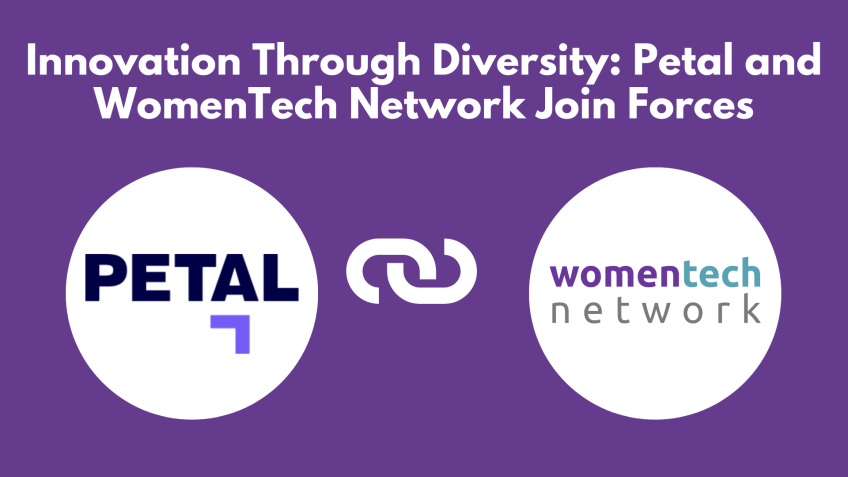
The technology industry has been a focal point for the discussion on gender diversity in the workforce. Despite the many calls to increase the representation of women in leadership technical roles, there remains a serious C-level promotion gap. To better understand the challenges faced by women in tech, we conducted a poll within our community asking what they perceived as the biggest barrier to their promotion, with 55% highlighting a lack of trust in their abilities and 29% citing a lack of clear path forward.
Women in Tech - Where are we now?
Our research reveals a clear trend of increasing gender disparities as employees progress in their careers. Notably, female representation in tech job applicant pools is highest at the junior level but significantly drops for mid-level and senior-level positions.
Despite some progress made in recent years, women, particularly women of color, continue to be significantly underrepresented in corporate America, with senior leadership roles experiencing the greatest disparity. Only 25% of C-suite leaders are women, and a mere 5% represent racial minority females. The persistent "broken rung" issue hinders efforts to achieve gender parity within organizations.
The obstacles women face in reaching senior leadership positions are evident. The statistics are concerning, with only 87 women and 82 women of color promoted to manager for every 100 men promoted. This significant gap at the first step up from entry level creates a substantial shortage of female candidates for higher-level roles, perpetuating the lack of representation.
How to close the promotion gap?
Overcoming such hurdles is a fundamental step in closing the gender disparity in leadership positions and encouraging more diverse representation in the tech sector. Businesses need to nurture a trusting environment and establish transparent opportunities for career progression, enabling women to enhance their skills and grow professionally.
To bridge the promotion gap and support gender equality within organizations, several key strategies should be implemented.
Role models
The path for young women is often lit by the presence of inspiring role models who exemplify work-life balance and serve as tangible examples of achievable career goals. By witnessing the success of these professionals, young women are more likely to aspire to climb the corporate ladder and actively pursue career advancement. WomenTech Network understands the importance of showcasing inspiring women in tech, which is why we have created initiatives such as "100 Women in Tech to Watch" and "Women in Tech Awards". These initiatives celebrate and honor the accomplishments of remarkable women and make them visible to other women and girls in STEM, offering the encouragement and inspiration they need to pursue their own aspirations in the field.
Career path
The lack of a clear definition of potential creates room for interpretation, allowing stereotypes and biases to influence decision-making. Traditional leadership stereotypes, often associated with male qualities, can hinder managers from envisioning women in such positions. Additionally, the misconception that diversity hampers performance may discourage organizations from actively promoting inclusivity. To counteract these biases, it is crucial to define potential and hold managers accountable for their evaluations. Implementing updated feedback processes and establishing a clear link between evaluations and employee performance can contribute to more accurate projections.
Skill Building
According to our poll, 8% of participants identified a lack of skills as a hindrance to their promotion. To overcome this challenge, organizations must ensure equal access to skill-building opportunities. Technical roles often require specific skills that may not be obtained through traditional educational pathways alone. Many women in these roles face a skills gap compared to their male counterparts, who may have had greater exposure to technology through hobbies and extracurricular activities during their upbringing. Providing comprehensive training and skills development programs empowers women in technical roles and equips them with the necessary tools for success and early career advancement.
Mentoring & Sponsorship
Establishing a supportive culture for women through mentorship and sponsorship programs is another key factor in promoting gender diversity and advancement in the technology industry. By engaging with both male and female mentors, individuals can gain valuable insights from experienced professionals who have been in the industry longer. Seeking guidance from mentors of different genders provides a comprehensive understanding of the organization's workings and helps develop skills in building professional relationships with male peers and leaders.
It is also important to consider mentors who come from diverse backgrounds, such as different age brackets, ethnicities, departments, or management levels. While initially, it may be challenging or unfamiliar to relate to mentors outside one's own background, the diversity of perspectives can offer eye-opening insights and broaden one's understanding.
In addition to mentorship, sponsorship programs play a crucial role in advancing women's careers. Mentors provide encouragement, empathy, and guidance to help women navigate challenges and achieve their goals. Sponsors, on the other hand, actively advocate for women's advancement by creating opportunities and supporting their professional growth.
To sum up, the leadership promotion gap in the tech industry carries substantial implications. Failing to promote and retain women in the early stages of their careers hampers the development of a larger pool of qualified female candidates for senior positions, perpetuating the gender gap. On the other hand, organizations that prioritize strong female representation in leadership positions experience enhanced profitability and share performance.
Therefore, companies that neglect to promote women to leadership roles not only risk compromising their competitive advantage but also run the risk of alienating potential customers. Recognizing the misallocation of talent between male and female employees is critical for maximizing organizational performance and underscores the significance of achieving gender equality and promoting women within organizations.
If you still haven't expressed your opinion in our poll, please feel free to join the conversation.







